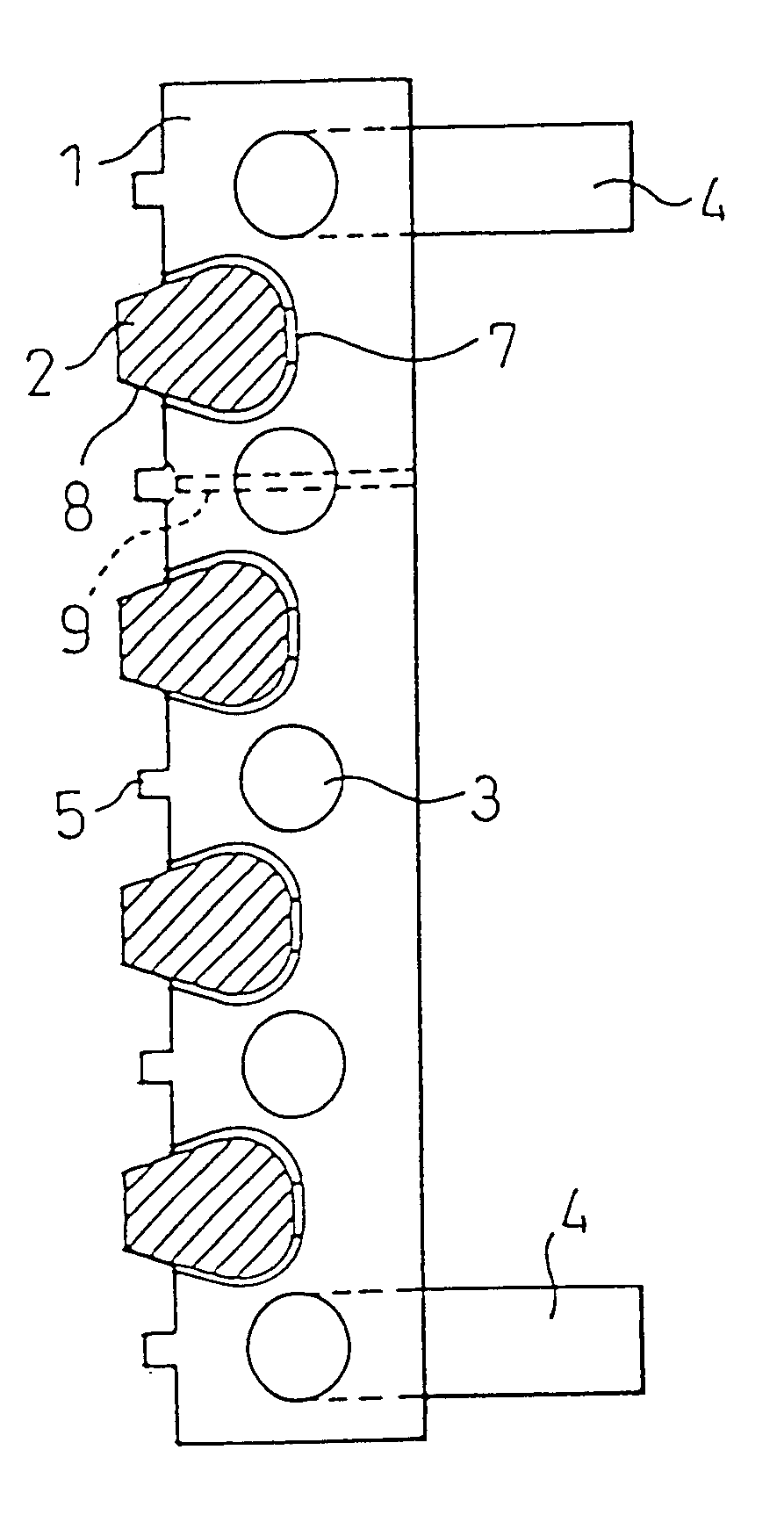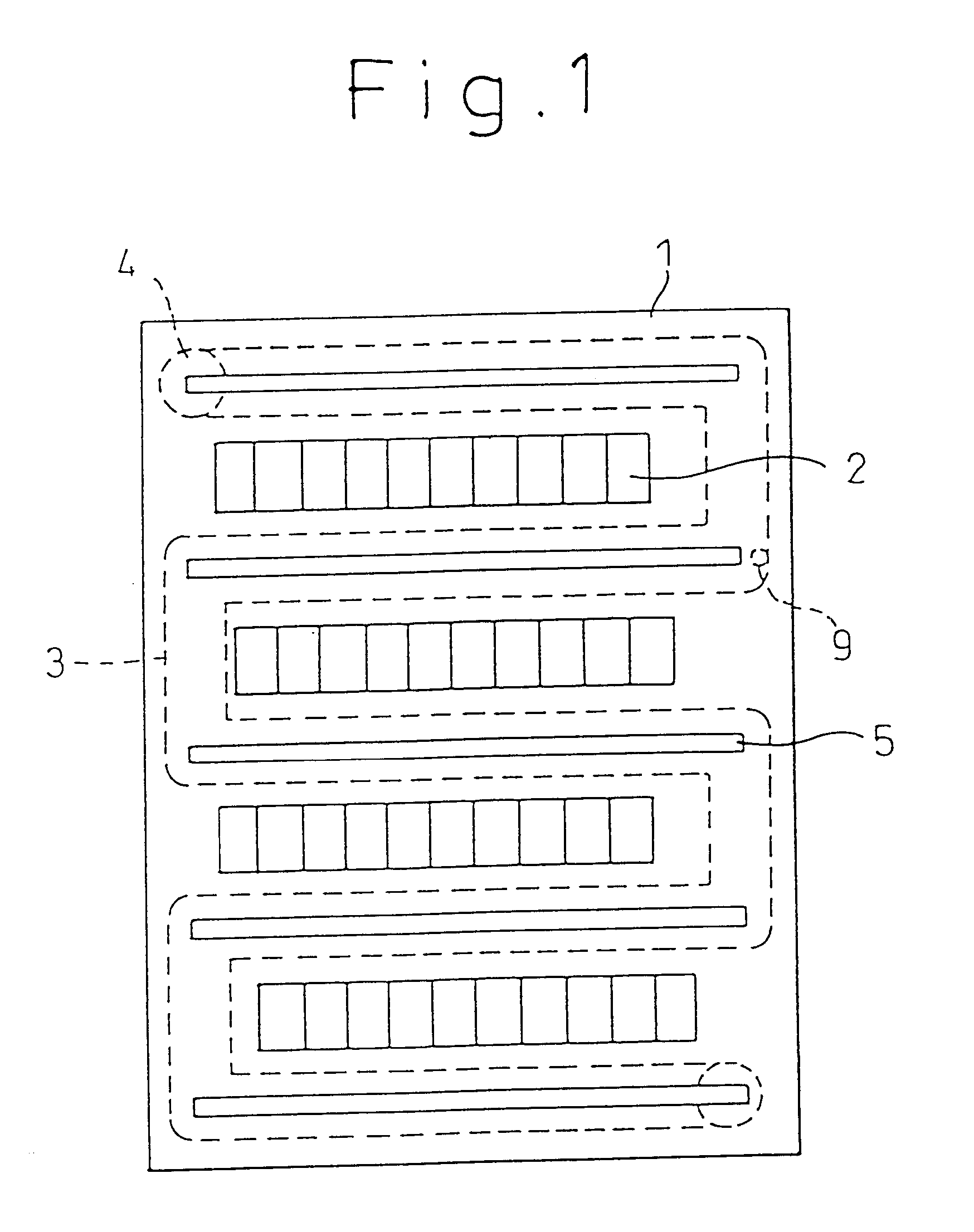Water-cooling panel for furnace wall and furnace cover of arc furnace
a technology for furnace walls and furnace covers, which is applied in the direction of furnaces, furnace crowns/roofs, servomotors, etc., can solve the problems of increased wear and tear of refractory used in furnace bodies and roofs, increased refractory-related costs, and more downtime for refractory repair
- Summary
- Abstract
- Description
- Claims
- Application Information
AI Technical Summary
Problems solved by technology
Method used
Image
Examples
Embodiment Construction
The invention water-cooled panel for use in the wall and roof of an electric-arc furnace will now be explained with reference to the drawings.
FIGS. 1-3 show a water-cooled panel 1 for use in the wall and roof of an electric furnace that is an embodiment of the present invention. Water inlet / outlet pipes 4, rows of refractory bricks 2 and a unitary cooling water pipe 3 installed between the rows of refractory bricks 2 are embedded in a casting. The distance between the cooling water pipe 3 and the surface of the casting of the water-cooled panel proper 1 on the furnace interior side is short. The surface of the casting on furnace interior side can therefore be efficiently cooled.
On the furnace interior side, the refractory bricks 2 embedded in the water-cooled panel 1 project from the casting surface into the interior of the furnace. The surface of the water-cooled panel on the furnace interior side is therefore irregular. This permits slag and other furnace molten matter 6 to adhere...
PUM
| Property | Measurement | Unit |
|---|---|---|
| temperature | aaaaa | aaaaa |
| surface temperature | aaaaa | aaaaa |
| temperature | aaaaa | aaaaa |
Abstract
Description
Claims
Application Information
 Login to View More
Login to View More - R&D
- Intellectual Property
- Life Sciences
- Materials
- Tech Scout
- Unparalleled Data Quality
- Higher Quality Content
- 60% Fewer Hallucinations
Browse by: Latest US Patents, China's latest patents, Technical Efficacy Thesaurus, Application Domain, Technology Topic, Popular Technical Reports.
© 2025 PatSnap. All rights reserved.Legal|Privacy policy|Modern Slavery Act Transparency Statement|Sitemap|About US| Contact US: help@patsnap.com



